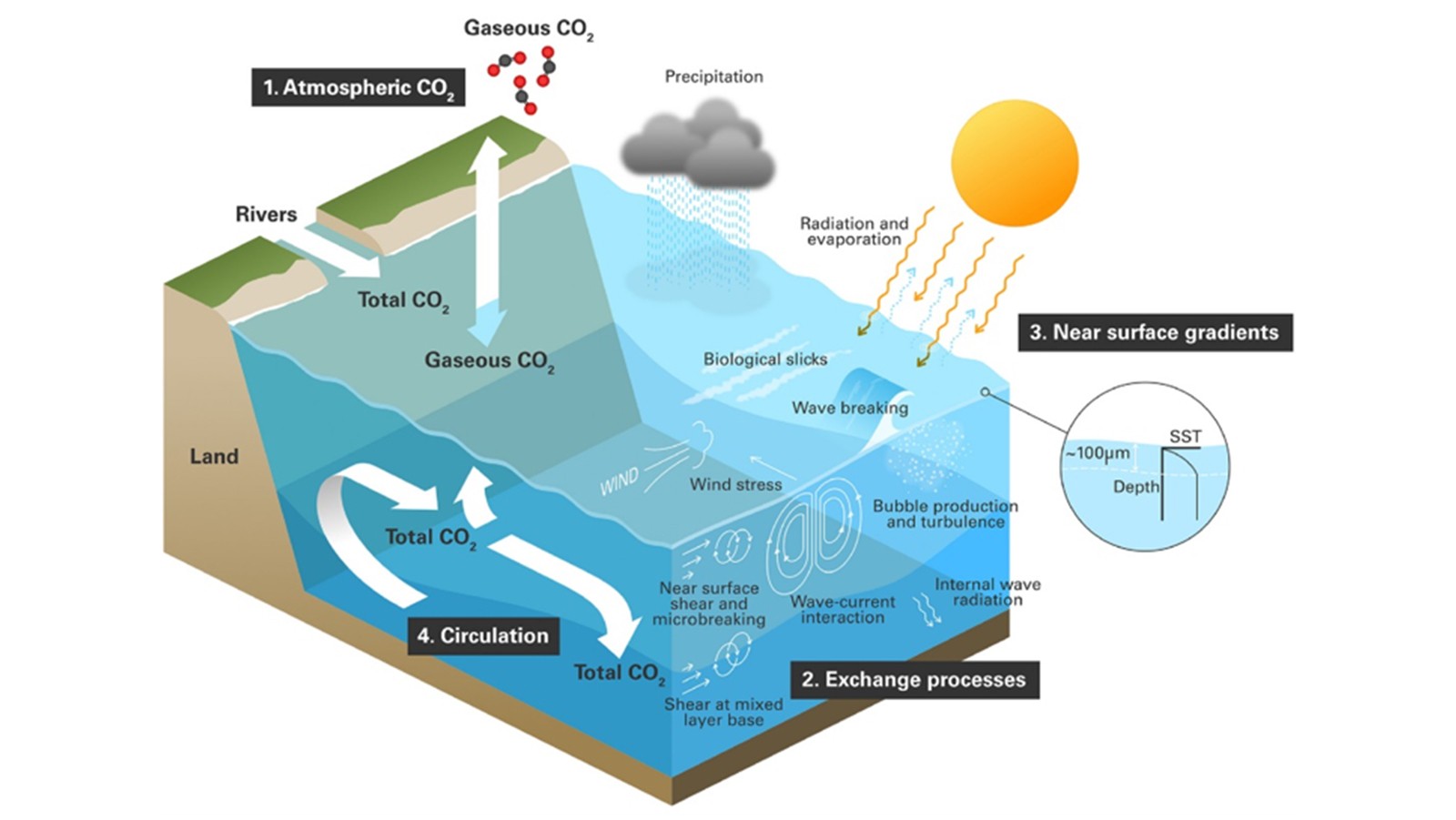Satellites play a critical role in monitoring carbon dioxide levels in the oceans, but researchers are only just beginning to understand their full potential
Note: This article was adapted from a University of Exeter press release.
The ability to predict Earth’s future climate relies upon monitoring efforts to determine the fate of carbon dioxide emissions. For example, how much carbon stays in the atmosphere or becomes stored in the oceans or on land? The oceans in particular have helped to slow climate change as they absorb and then store carbon dioxide for thousands of years.
The Intergovernmental Panel on Climate Change’s Special Report on the Oceans and Cryosphere in a Changing Climate, published in September, identified the critical role the ocean plays in regulating climate, along with the need to increase monitoring capabilities and understanding of ocean health.
The oceans, however, are vast. Covering more than 70% of the Earth’s surface, it’s little wonder why satellites have become such an important component in globally monitoring oceanic carbon. Although research vessels, buoys, and transport ships routinely collect carbon data, some oceans remain chronically undersampled.
A new study published in Frontiers in Ecology and the Environment[1] finds that greater use of existing satellites will enable scientists to fill critical knowledge gaps for monitoring Earth’s climate. Led by the University of Exeter, the work reports that satellites originally launched to study the wind also have the capability to observe how rain, wind, waves, foam, and temperature all combine to control the movement of heat and carbon dioxide between the ocean and the atmosphere.
Satellites launched to monitor gas emissions over the land are also able to measure carbon dioxide emissions as they disperse over the ocean. Additionally, future satellite missions offer an even greater potential for new knowledge, including the ability to study the internal circulation of the oceans, while new constellations of commercial satellites designed to monitor the weather and life on land could also aid in monitoring ocean health.
“Monitoring carbon uptake by the oceans is critical for understanding our climate and for ensuring the future health of the animals that live there,” said lead author Jamie Shutler, PhD, of the Centre for Geography and Environmental Science on Exeter’s Penryn Campus in Cornwall. “By monitoring the oceans we can gather the necessary information to help protect ecosystems at risk and motivate societal shifts towards cutting carbon emissions.”
The research team—comprised of scientists from multiple European institutes and universities, NOAA, the Japan Aerospace Exploration Agency, and the European Space Agency—calls for a “robust network” that can routinely observe the oceans. This network would need to combine data from many different satellites with information from automated instruments on ships, autonomous vehicles, and floats that can routinely measure surface water carbon dioxide.
Recent computing advancements such as Google Earth Engine, which provides free access and computing for scientific analysis of satellite datasets, could also be used. The study suggests that an international charter that makes satellite data freely available during major disasters should be expanded to include the “long-term human-made climate disaster,” enabling commercial satellite operators to easily contribute.
According to Rik Wanninkhof, PhD, a study coauthor and an oceanographer at AOML, “the work highlights the tremendous opportunities available for current and future satellite missions to observe the rapid changes occurring in the ocean carbon cycle and their impact on climate and ocean health.”
Satellite-based carbon observations are needed to address knowledge gaps and inform policies that motivate societal shifts to reduce emissions. The research was supported by the International Space Science Institute in Bern, Switzerland and was initiated by Drs. Shutler at the University of Exeter and Craig Donlon of the European Space Agency.
[1]Shutler, J.D., R. Wanninkhof, P.D. Nightingale, D.K. Woolf, D.C.E. Bakker, A. Watson, I. Ashton, T. Holding, B. Chapron, Y. Quilfen, C. Fairall, U. Schuster, M. Nakajima, and C.J. Donlon, 2019: Satellites will address critical science priorities for quantifying ocean carbon. Frontiers in Ecology and the Environment, doi:10.1002/fee.2129.
